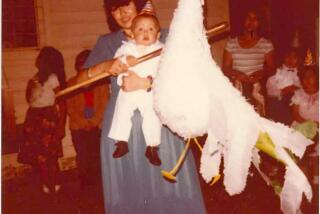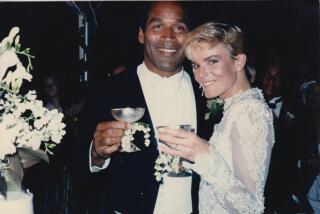The Black Dahlia still lives, in our fevered imaginations
What combination of circumstances makes us remember an otherwise forgettable event? Here’s the recipe, from 67 years ago Wednesday — the Black Dahlia murder.
She was a young nobody, a pretty-ish drifter of a type that filled L.A. just after the Second World War. How she lived was unremarkable, hardly admirable; it was how she died, and what the newspapers said about her, that makes us remember the Black Dahlia.
Elizabeth Short’s body was found, naked and cut in half, in a weedy winter bean field that, 10 years later, in the manner of Los Angeles, would be a tidy Crenshaw neighborhood.
Decades after it happened, I wrote briefly about the case, and even that small story stirred calls, letters and, as I recall, even another confession to the cops among the hundreds they got over the years, some from men who weren’t even born when the Dahlia was killed.
That’s how famous her case was, and fame, if not regard, would attach itself to whoever killed her. But as the lead detective, Harry Hansen, told me in his retirement, none of them could ever answer the three secret, key questions that detectives had for them.
Remember this was just after the war, long before wall-to-wall TV. KTLA didn’t make its official inaugural broadcast until a week after the Black Dahlia was found. Bob Hope hosted the broadcast from a garage at Paramount.
Like the O.J. Simpson case, everyone then had a Black Dahlia story. My vet’s now-retired assistant told me years later that one suspect, Red Manley, who’d wined and dined and probably bedded the Dahlia a few days before she was murdered, had abandoned his car in her father’s garage.
Decades later, a Times photographer who had taken black-and-white photos at the scene used them to haze newbies like me. He laid out the pictures on a table in the photo department and watched for my reaction. I’d been tipped off about what was coming, and I bit back the bile as I looked at the photos and said casually, “Interesting angle.”
In life, the Dahlia was a dreary specimen, a Massachusetts-to-Hollywood hopeful who filled her cavities with candle wax; a woman who, as Hansen told me, cadged “a good dinner and a pair of nylon hose” out of her companions.
In death she was a star. Almost every tabloid word turned up in the L.A. Times’ first story on the case, headlined “Girl Victim of Sex Fiend Found Slain.”
“Butchered by a sex maniac,” it began; “nude,” “young girl,” “orgy of torture.” News was slow compared to the war’s huge headlines, Hansen told me, and this was manna to the city’s many newspapers.
I’d also talked to Betty Bersinger, the woman who found Short’s body. She was walking across the empty lot with her young daughter, heading for the shoe repair store at the shopping center across the way.
She said that she never thought about the case until someone else brought it up, and I can understand why she’d want to put it out of her mind: a naked, bloodless corpse cut in half, the pieces lying a few feet apart.
“At the time I wasn’t quite aware it was a real person — maybe somebody playing a trick. So frightening,” she told me. It was laid out like two halves of a mannequin, and when she realized it wasn’t, her first thought was to get her little girl out of there and call the police before the kids who rode their bikes nearby saw the body.
Well before the Internet, the conspiracy theories flourished. Here’s a note I scribbled as I listened to a message from a caller who read my story and assured me: “Dahlia’s mouth slashed and rose cut out of her right forearm & put in her mouth.” Here’s a letter from a retired psychiatrist who had treated Red Manley for “violent psychosis in which he thought he was God etc.” The doctor assured the police that Manley was the killer, “but nothing came of it.”
My colleague Larry Harnisch, who’s written a great deal about the case, gets the same kinds of letters, emails and phone calls every time he does a story on it.
The Black Dahlia became L.A.’s version of Jack the Ripper, as alluring in its unknowns as its knowns. The renowned writers Gregory Dunne and James Ellroy founded novels on her case. And, as a tease to writers yet to come, she is still there, living on in what Hansen described as “three or four” LAPD filing cabinets, her life extinguished for 67 years, her death still unsolved.
ALSO:
Learning from the Kelly Thomas case
The best solution for the Octomom’s kids
Anita L. DeFrantz, America’s powerful Olympic presence
Follow Patt Morrison on Twitter @pattmlatimes
More to Read
A cure for the common opinion
Get thought-provoking perspectives with our weekly newsletter.
You may occasionally receive promotional content from the Los Angeles Times.







